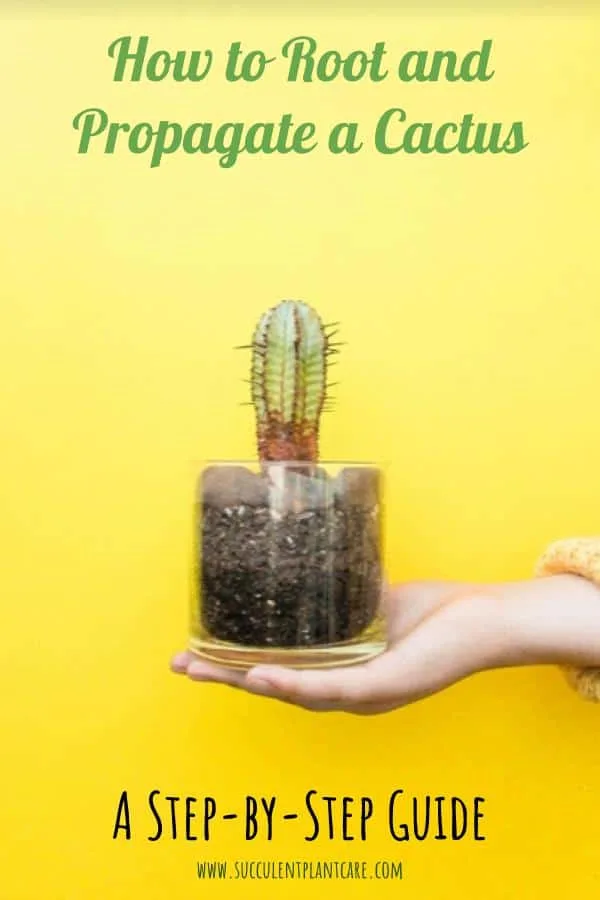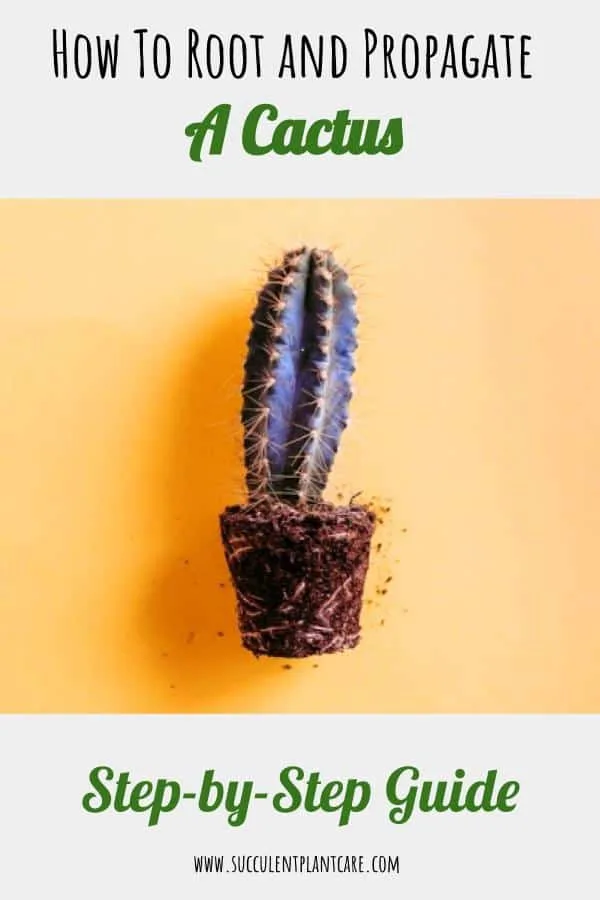Propagation is the process of producing new plants from the plants you already have. In the wild, propagation from seeds is the most common method. This is achieved from flowering, pollination, fertilization, and eventually seed formation.
As natural habitats of succulents and cacti decline, the need to propagate and maintain these species in cultivation becomes more and more crucial for their survival.

Not only that, but propagation has become part of the charm of growing these plants. Growers and hobbyists who have tried their hand at propagating succulents find it highly rewarding and engaging.
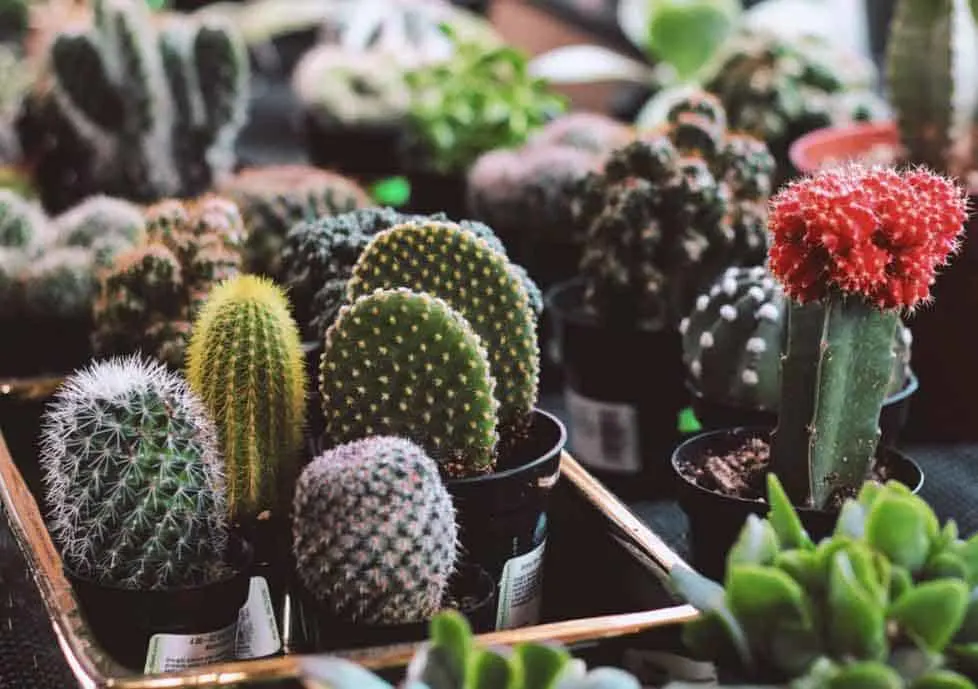
Just like succulents, cacti can be propagated in several ways. Certain species may be easier than others to propagate. Common methods to propagate cacti are:
Propagating from cuttings
Propagating by stem cuttings is probably the most common and easiest route. Many cacti can be propagated successfully by stem cuttings. Stem cuttings are taken from an existing plant, then allowed to dry and callous. The cuttings will eventually start rooting from the cut end and start growing as a new plant.
Some cacti that commonly propagate from stem cuttings are:
- Opuntia or prickly pears
- Columnar cacti
- Pincushion and Globular cacti
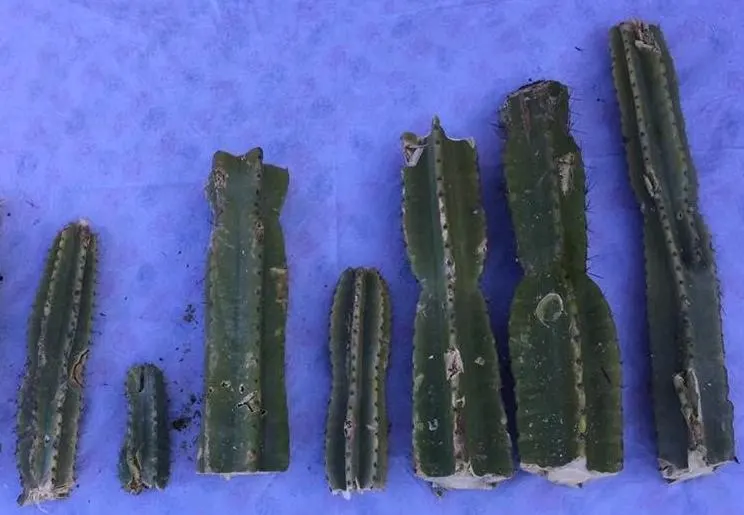
Propagating from seeds
Most cacti species can be propagated from seeds. This process is slow and requires a lot of time and patience but can also be highly rewarding when successful. Cacti with solitary growth habits are usually propagated by seeds. Seeds can be harvested from the plant’s flowers.
The flowers need to be pollinated either by pollinators or through self pollination. Self pollination can be achieved by using a paint brush to pollinate the flowers. If all goes well fertilization will occur. The flowers can then be dried and stored and seeds harvested from them.
The harvested seeds need to be provided with the right environment to germinate into seedlings. The germinated seedlings will be ready to be transplanted and treated as new plants once they grow big enough. You usually need to start off with a lot of seeds since only a few seedling survive to maturity.
Propagating from offsets/offshoots
Many cacti species propagate asexually by means of growing lateral shoots or offsets. Not all cacti produce offshoots. The ones that do include echinopsis species, mammillaria species and many others.
Offshoots can be carefully removed and placed in a suitable potting mix to start a new plant. Removing offshoots from the mother plant helps to refocus the energy to the growth of the main plant.
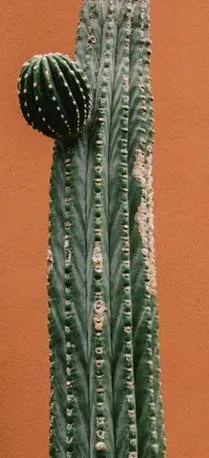
Grafting
Grafting is the process of taking a cut piece of a cactus and attaching in onto a severed piece of another cactus. The cut or grafted part is called a ‘scion’ and the base or rooted part is called the ‘rootstock’. Grafting requires a compatible and hardy rootstock.
Compatibility is very important for grafting to be successful. The compatibility is higher when the rootstock and scion are from the same species. The compatibility decreases the further the cacti are in their genetic relations.
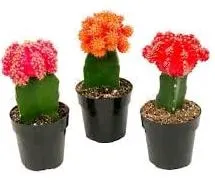
Cacti grafting is done for different purposes. One purpose is to produce stems that are less susceptible to diseases and pests. Another reason is to replace an existing stem that is rotting.
Some gardeners want to enhance photosynthesis in some cacti that lack the ability. Grafting seems intimidating but is pretty straightforward that even a beginner gardener can try their hand at.
Easy steps on how to propagate a cactus
There are a few different ways to propagate succulents. Below are some simple steps to follow to propagate your cacti successfully.
Propagating from cactus pads
Step 1
Disinfect your tools. Use a sharp knife or razor blade. Pruning shears are not ideal for making a clean cuts. You want a clean cut and avoid jagged edges or crushing the tissues of the cacti.
Make sure the knife or blade you are using is cleaned and disinfected to prevent the spread of disease. You can wash them with warm soapy water or use alcohol wipes to disinfect. Be careful to disinfect every time you perform a cutting by wiping the tool to avoid introducing fungus and diseases.
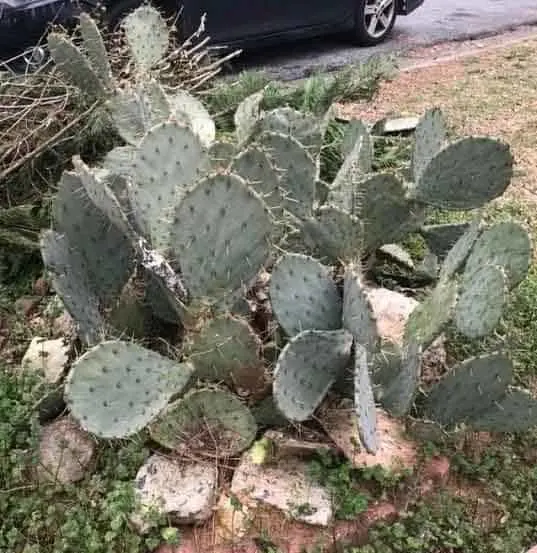
Step 2
Protect your hands and fingers. When handling prickly and spiny cacti, it is always a good idea to wear gloves and use tools like tongs or pieces of cloth to protect your fingers and hands.
Step 3
Cut off one of the pads. Select a pad to cut. Ideally, you want to choose a healthy plant to have a better success rate. Avoid using pads with visible signs of stress, disease or discoloration.
Sometimes, pads break off easily. Simply grab a cactus pad using your tongs or a piece of cloth to break off the pad from the main plant. You can also use a sharp sterile knife to cut one of the pads off.
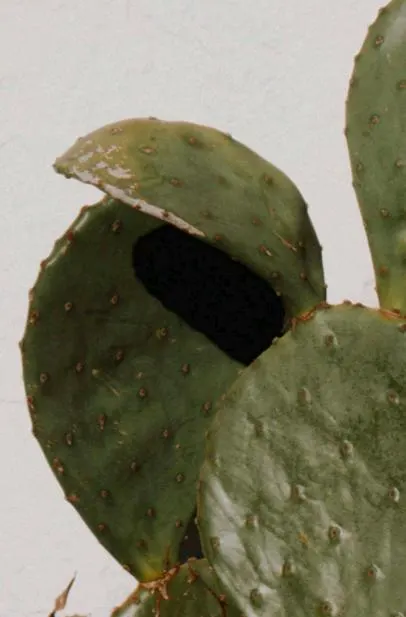
Step 4
Let it dry. After cutting, let the pads dry for a few days to allow for the wound to heal and callous over. Keep away from direct sunlight while drying.
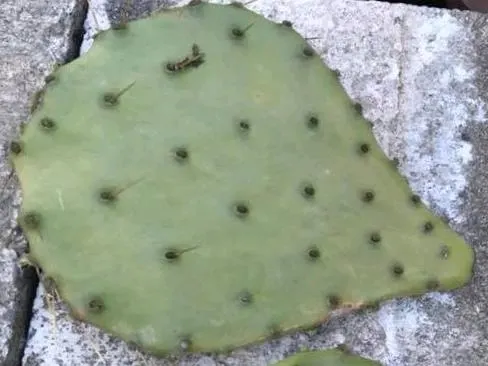
Step 5
Dip in rooting hormone (optional). Once dried, dip the cut part of the pad in rooting hormone. This step is optional and you can decide to skip it altogether.
Step 6
Plant the cutting. Prepare a potting mix suitable for cacti with good drainage. You can plant the dried cutting into a the potting mix by sticking the cut part into the soil. About ⅓ of the cutting should be in the soil. Pack the soil around the pad to secure it so it does not tip over.
OR
Lay the pads flat. Instead of planting right away, some choose to lay the pads flat until roots start developing. Once roots develop, plant in a suitable potting mix.
Step 7
Water sparingly. Wait for a few days before watering the newly potted pad. You can mist the soil every few days or when the soil feels dry. Once the roots are established, decrease watering and allow the soil to dry out before watering again.
Step 8
Keep away from direct sunlight. Place in a bright location but protect from direct sunlight until roots are established.
You have a new plant. It will take several weeks for the roots to be established. A few months later, you will notice new growth and you have yourself a new plant. You can slowly increase the amount and intensity of sunlight to avoid burning the plant.
Propagating from columnar cactus cuttings
Step 1
Disinfect your tools. Use a sharp knife or razor blade. Pruning shears are not ideal for making a clean cuts. You want a clean cut and avoid jagged edges or crushing the tissues of the cacti. Make sure the knife or blade you are using is cleaned and disinfected to prevent the spread of disease.
You can wash them with warm soapy water or use alcohol wipes to disinfect. Be careful to disinfect every time you perform a cutting by wiping the tool to avoid introducing fungus and diseases.
Step 2
Protect your hands and fingers. When handling prickly and spiny cacti, it is always a good idea to wear gloves and use tools like tongs or pieces of cloth to protect your fingers and hands.
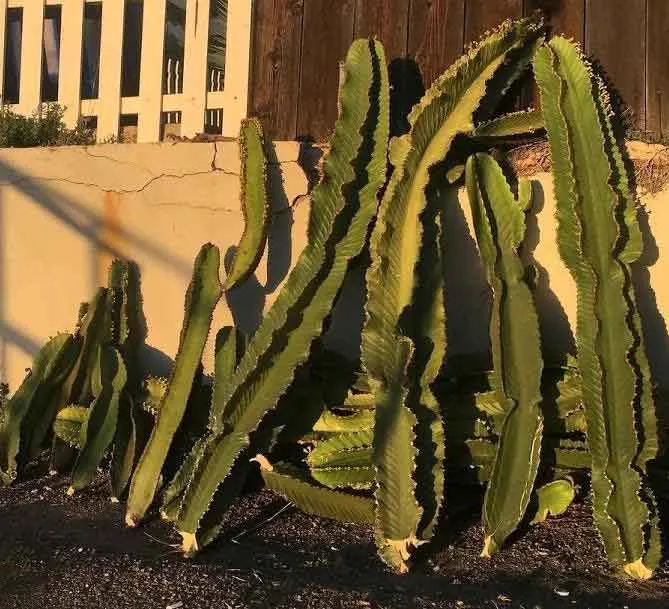
Step 2
Protect your hands and fingers. When handling prickly and spiny cacti, it is always a good idea to wear gloves and use tools like tongs or pieces of cloth to protect your fingers and hands.
Step 3
Select a columnar cactus to cut. A good size is at least about four inches long and no more than four inches in diameter. Wider columnar cacti are harder to root.
Step 4
Make a clean cut. Using one hand to steady the top of the columnar cactus, make a clean cut with sharp clean knife.
Step 5
Let it dry. Let the cutting dry for a few days to allow for the wound to dry and callous over. Depending on the size of the cutting, this can take from three days to a week or more. Let the cut part of the cutting be exposed to air. Keep away from direct sunlight while drying.
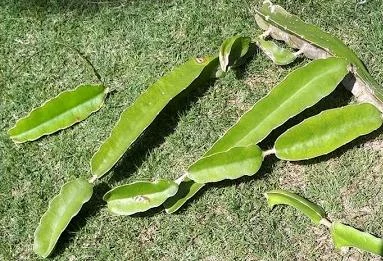


Step 6
Dip in rooting hormone (optional). Once dried, dip the cut part in rooting hormone. This step is optional and you can decide to skip it altogether.
Step 7
Plant the cutting. Prepare a suitable potting mix for cacti with very good drainage. Place the dried cutting into a the potting mix by sticking the cut part into the soil.
About ⅓ of the cutting should be planted in the soil . Pack the soil around the cutting to secure it so it does not tip over.
Step 8
Water sparingly. Wait for a few days before watering the newly potted columnar cactus. You can mist the soil every few days or when the soil feels dry. Once the roots are established, decrease watering and allow the soil to dry out before watering again.
Step 9
Keep away from direct sunlight. Place in a bright location but protect from direct sunlight until roots are established.
You have a new plant. It will take several weeks for the roots to be established. A few months later, you will notice new growth from the top of your newly potted plant as well as the mother plant from you obtained your cutting from. You can slowly increase the amount and intensity of sunlight to avoid burning the plant.
Propagating from offshoots
Step 1
Find a cactus that have produced offshoots. Offshoots are the babies that grow from the mother plant. Not all cacti produce offshoots. The ones that do include echinopsis species, mammillaria species and many others.
Step 2
Disinfect your knife. Use a sharp knife that has been cleaned or disinfected. You can do this by washing with warm soapy water or wiping with rubbing alcohol. Be careful to disinfect every time you perform a cutting by wiping the knife with alcohol to avoid introducing fungus or diseases.
Step 3
Protect your hands and fingers. When handling prickly and spiny cacti, it is always a good idea to wear gloves and use tools like tongs or pieces of cloth to protect your fingers and hands.
Step 4
Find offshoots to be removed. Once an offshoot has grown large enough or has started producing roots, they can be removed from the mother plant. Try to get some roots when removing the offshoot.
You can remove one without roots, but you will have much greater success with ones that have roots already growing. Offshoots without roots will eventually root themselves, but offshoots with existing roots have a greater chance of survival on their own.
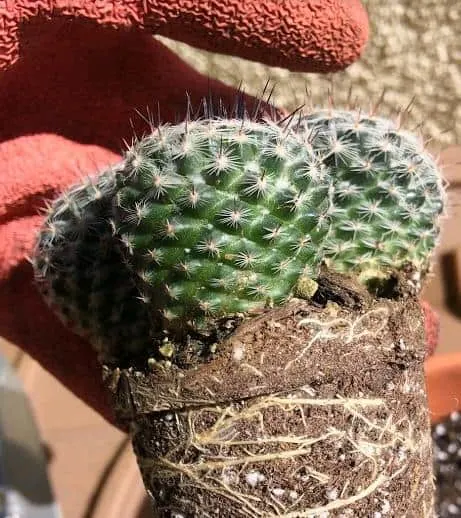
Step 5
Remove the offshoot. You can use a clean knife to gently remove the offshoot from the mother plant. Some offshoots are easier to remove than others.
Sometimes they can be separated by gently pulling the offshoot from the mother plant. Most times you need to use a sharp knife or tool. Carefully separate the baby plant from its mother plant by inserting the knife blade between the mother plant and the offshoot.
Slowly pull apart the baby plant from the mother plant and sever the connecting root. If removing while still planted in the soil, insert the knife blade into the soil between the mother plant and the offshoot. Slide the blade down the soil to sever the connecting roots.
Carve out a 2-inch radius in the soil around the base of the offshoot then dig a few inches down the radial parameter using sharp end of a a small spade. Insert the spade at an angle underneath the offshoot and carefully pry it loose from the soil to remove.
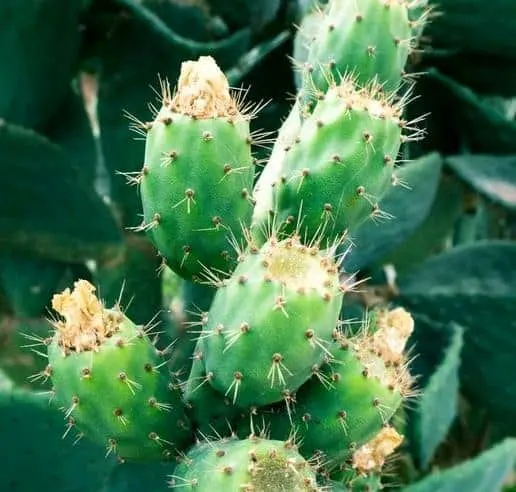
Step 6
Plant the offshoot. Once removed, the offshoot can be planted on its own. Prepare a suitable well draining potting mix and fill a small pot with it. Plant the offshoot into the soil. Pack the soil lightly around the plant until secure.
Step 7
Water sparingly. Wait for a few days before watering the newly potted columnar cactus. You can mist the soil every few days or when the soil feels dry. Once the roots are established, decrease watering and allow the soil to dry out before watering again.
Step 8
Keep away from direct sunlight. Place in a bright location but protect from direct sunlight until roots are established.
You have a new plant. Once the roots are established, you can slowly increase the amount and intensity of sunlight to avoid burning the plant.
Propagating by grafting
You will need:
- Cacti
- Sharp knife
- Rubbing alcohol
- Rubber bands
- Electrical tape
- Gloves
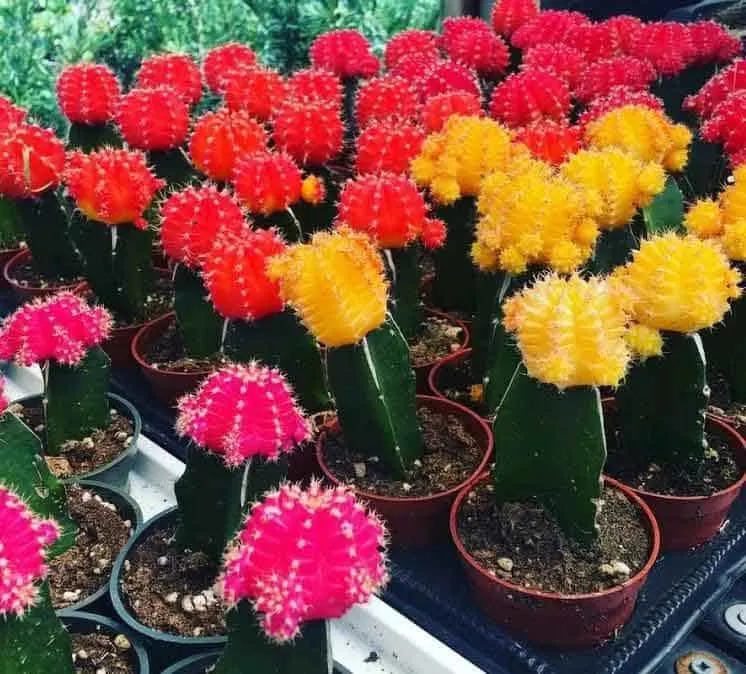
Step 1
Disinfect your knife. Use a sharp knife that has been cleaned or disinfected. You can do this by washing with warm soapy water or wiping with rubbing alcohol. Be careful to disinfect every time you perform a cutting by wiping the knife with alcohol to avoid introducing fungus or diseases.
Step 2
Select your cacti to be grafted. Grafting requires a compatible and hardy rootstock. Compatibility is very important for grafting to be successful. A suggestion is choosing a fast growing one as the base or rootstock and a slow growing one on top or the scion.
Common cacti used as rootstocks are Hylocereus Trigonus or Undatus and Trichocereus Spachianus. Having the rootstock and scion from the same species increases the compatibility.
Step 3
Prepare the rootstock. Cut about a few inches above the soil. This beheaded cactus will be your rootstock.
Step 4
Cut the scion. Cut the top off a cactus stem about 1-inch in diameter. This will be the scion.
Step 5
Place the scion on top of the rootstock. Carefully place the scion on the cut portion of the rootstock so that the vascular cambium of both cacti are touching each other.
The vascular cambium is the distinct ring in the center of the cut cactus. The vascular cambium of the scion and rootstock need to come in contact with each other for successful grafting to take place.
Step 6
Secure the two together. Use rubber bands or electrical tape to secure the two cacti together. Make sure the scion is well secured and pressing against the rootstock.
Step 7
Wait about two months. After about one or two months, remove the rubber bands or tape. The scion should be firmly attached to the rootstock and you have a newly grafted cactus plant.
How to root a broken piece of cactus
Step 1
Disinfect your knife. Use a sharp knife that has been cleaned or disinfected. You can do this by washing with warm soapy water or wiping with rubbing alcohol. Be careful to disinfect every time you perform a cutting by wiping the knife with alcohol to avoid introducing fungus or diseases.
Step 2
Inspect the broken end of the cactus. If you find uneven or jagged cuts from where it broke off, cut out the uneven edges with a sharp clean knife to even it out.
Step 3
Let it dry. Set the broken piece aside and let it dry and callous over to heal. This may take anywhere from a couple of days to weeks depending on the size of the cactus and the humidity. Keep the cut in a bright location but away from direct sunlight.
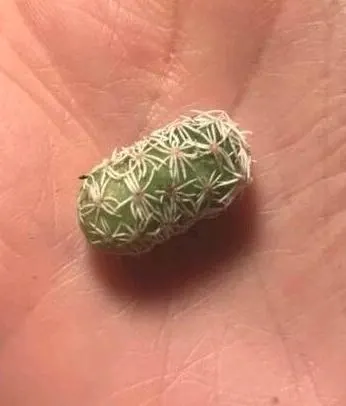
Step 4
Prepare the pot. Choose a pot with drainage holes that is appropriate for the size of the broken cactus. Fill the pot with a suitable cactus mix that is well draining.
Step 5
Dip in rooting hormone (optional). You can dip the dried end in rooting hormone before planting. This step is optional.
Step 6
Plant the broken piece. Put the dried end into the potting mix about ⅓ into the soil. Make sure the piece is standing erect. Pack the soil around the plant to secure it. Place the pot in a bright location but away from direct sunlight.
Step 7
Wait before watering. Do not water until two to four weeks later. Then wait until the soil is completely dry or two weeks later before watering again.
Step 8
Increase sunlight. The roots will start to form in about two to six weeks. You can check for roots by pulling the plant. If you feel resistance while tugging, the plant has started developing roots. Once roots are more established, you can slowly increase the intensity of sunlight it receives.
Congratulations! You have yourself a new plant from a broken piece.
When NOT to Propagate a Cactus Plant
Cacti, just like succulents, are among the some of the easiest plants to root and propagate even for beginners, which adds to their appeal. Cacti can be propagated any time of the year, but cactus cuttings root fastest around the summer months to early autumn. To ensure propagation success, try not to propagate during these times:
During a heatwave
It is not the best time to propagate during a heatwave. When plants are stressed and focused on survival, they are not in the best condition to multiply. It is better to wait until the heatwave has passed or during a milder, less hostile season to get the optimal result you are looking for when propagating.
Pruning and cutting your plant for propagation also introduces more stress to the plant, as it needs to focus on healing and regrowing as well as surviving these harsh conditions.
However, if plants are kept indoors and protected from the intense heat outside, or kept in a temperature controlled environment, then propagating during a heatwave doesn’t pose that much of a problem.
During frost or freezing temperatures
Cacti go dormant during freezing temperatures and frost. During frost, plants shut down and are not actively growing. Propagating your plants around this time is will not provide the best results you are aiming for. Wait until frost is over before you propagate to ensure the optimal survival of the plants.
Propagating around this time makes your plant more susceptible to diseases and rot. Pruning or cutting your plant for propagation during this time introduces new stress to the plant as it needs to focus its energy on healing and regrowing.
If you are wondering where you can purchase cacti and succulents online, please check out my Resource Page to get some ideas.
Pin this to save for later or share with others now!
